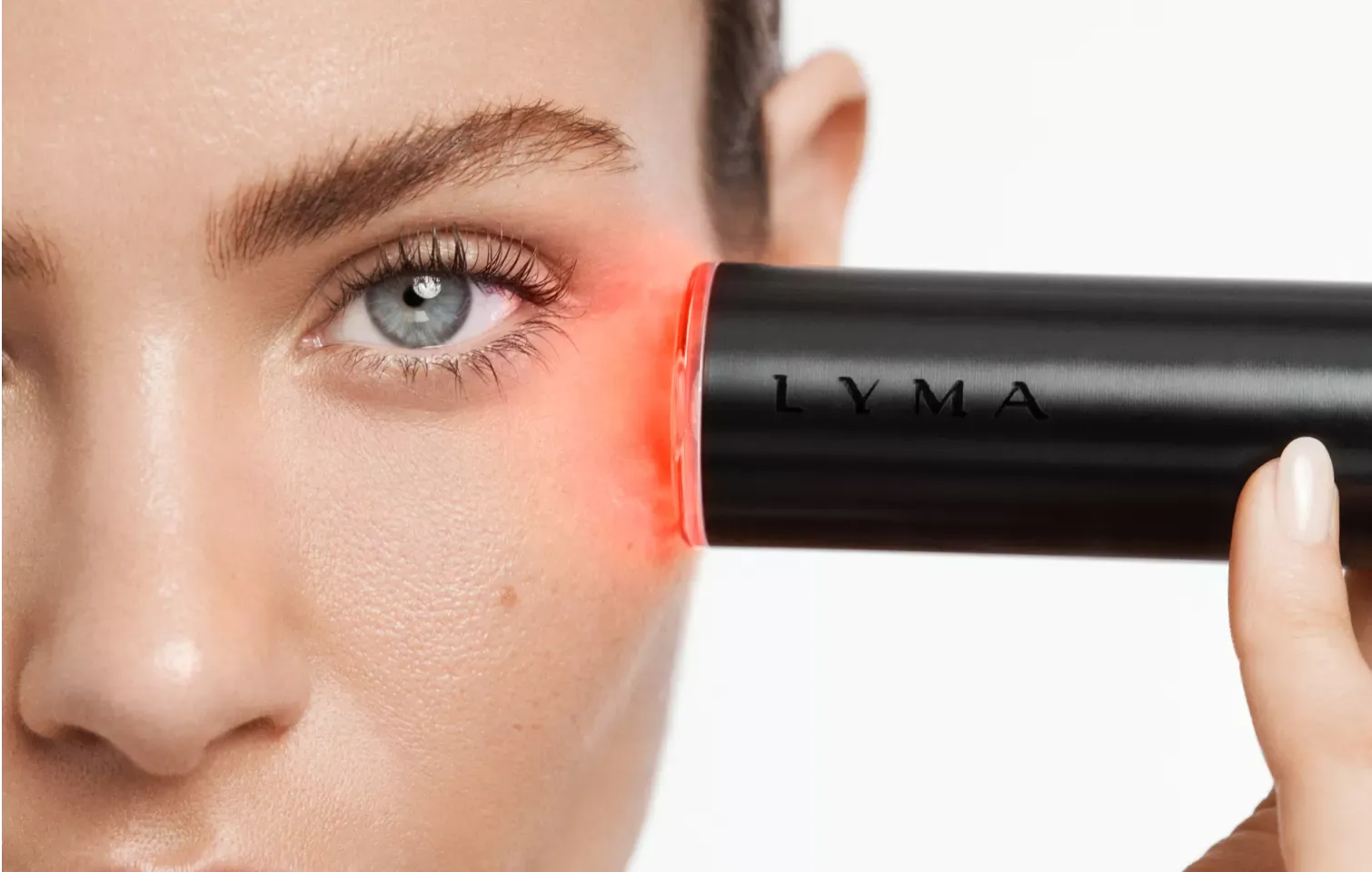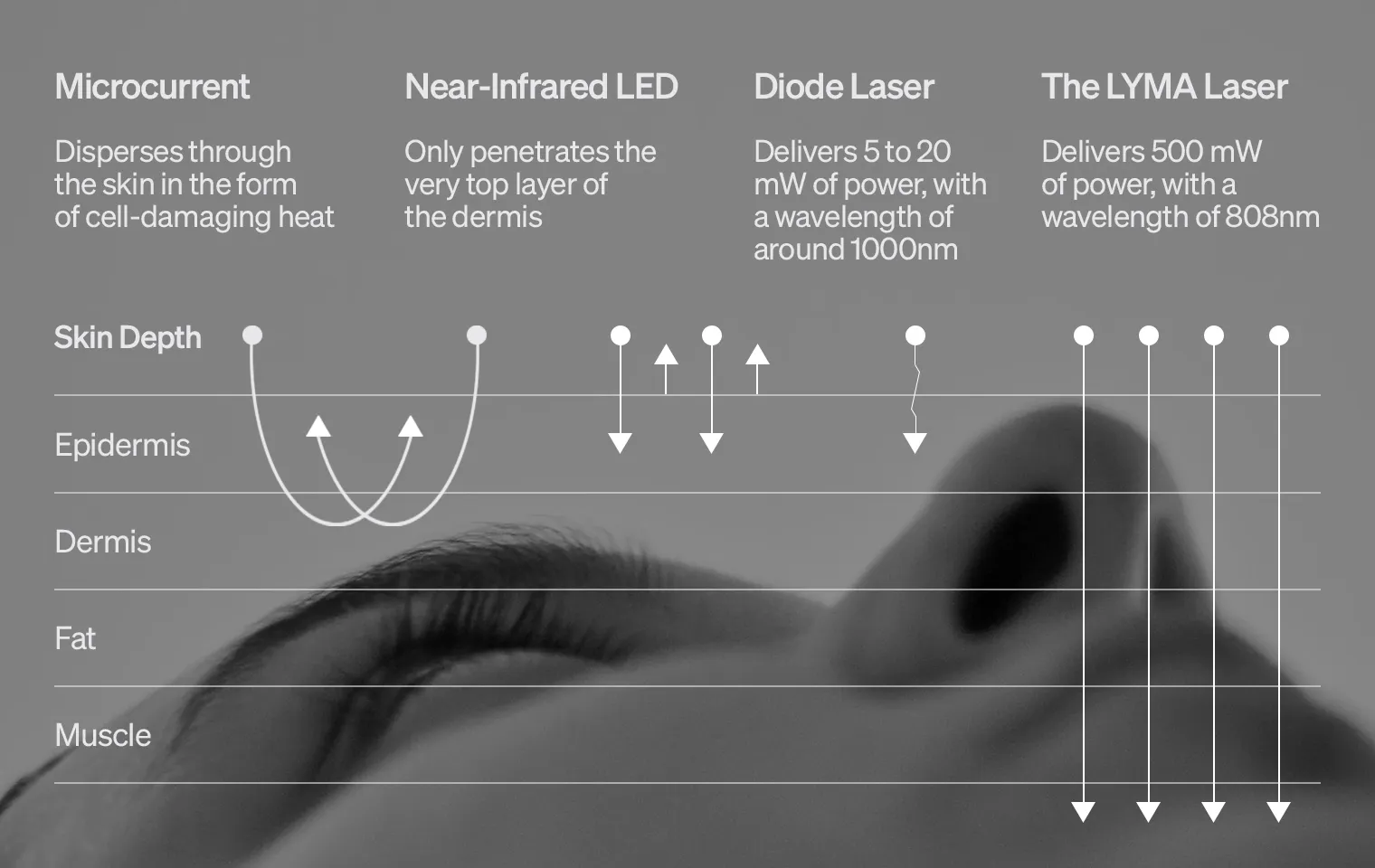9 Minute ReadTrend Report by Jessica Lacey
15.01.24
The at-home beauty gadgets market is booming and as technology is ever advancing, there are more modalities than ever before. Which is why we’ve compiled the latest and greatest facial gadgets of 2024.
Skincare has always had the penchant for the hi-tech. The newest formulations and the latest innovations all promise the holy grail of brighter, bouncier skin but gaining the most traction in the beauty arena right now are skincare gadgets. Zapping, pricking, whizzing beauty devices have all made their way out of the professionals’ safely gloved hand and into our bathroom cabinets. Now we can wave the hi-tech wands, it’s just a case of working out what they can do for us. But which at-home beauty gadgets actually work?
For a skin care device to have any profound effect on the appearance or behavior of skin it must do one of two things:
1. Inflict physical or thermal attack on the skin to trigger skin’s injury healing response to panic-make collagen
or
2. Transfer sufficient energy into skin cells to wake up their power centers to regenerate
Popular in-clinic modalities such as microneedling can achieve regenerative results, but only by causing intentional physical injury to skin. Microneedling is not for those with a low pain threshold because it involves a lot of topical anesthetic and a fair amount of blood.
The creation of small micro-channels and injuries to the skin with an acupuncture-size needle, the skin is forced to channel all efforts into healing itself. This has the resultant effect of stimulating collagen production which can reduce the appearance of fine lines and give a smoother, more glowing skin texture. The reality is that in the immediate term, microneedling routinely results in wounding, swelling and a sensitive prickling feeling.
At-home needling devices are duller and less penetrative than their in-salon sisters, though still work on the same basis of causing tiny micro-injuries to systematically damage the skin to kick-start it into repair and rejuvenation. At-home microneedling carries high risk of bruising and scarring and because at-home needling equipment is difficult to keep clean, there’s also a high risk of infection.
To mitigate this, some at-home microneedling gadgets direct that each needle only be used once and thrown away which raises concerns about sustainability, safety in needle disposal in domestic waste and houses with children.

Not overly dissimilar in its approach, radiofrequency entails low-frequency electromagnetic waves that heat the skin. This inflicts intentional thermal damage on the skin in order for the healing response to be triggered and collagen synthesized in order to repair.
RF is a hugely popular in-clinic treatment but the results of at-home radiofrequency devices are somewhat less impressive. For fear of burn risk, at-home radiofrequency devices can only operate at low energy levels, consequently they often have little to no effect for skin rejuvenation .
The argument against both microneedling and radiofrequency as skin rejuvenation techniques is that in an age of advanced skin technology that prioritizes skin health, both seem somewhat archaic in causing skin unnecessary trauma.

Using a very low-level electrical current with a conductive gel, at-home microcurrent devices work on the facial muscles to temporarily tone, stimulate and sculpt the facial contours. Microcurrent is largely pain and damage free but only works at the superficial layers on the skin.
The results can look instantly impressive but because nothing has fundamentally changed in the skin’s structure, it’s not long until the facial muscles become lax again. The fast-fading results of at-home microcurrent gadgets mean efforts must be continually maintained otherwise or the return of the droop is inevitable.
The NuFACE Trinity Facial Toning Device is prolific but results are still temporary and many find the application of the conductor gel to be messy, and the treatment protocol overly prescriptive and time-consuming. Skin professionals dispute that you’d get the same results with a face oil and some vigorous facial massage.

Dermatologist offices have long stocked professional LED light therapy like the Dermalux TriWave MD that uses a combination of three clinically proven wavelengths of light – red, blue and near-infrared LED.
But it was the launch of the Omnilux Contour Face Mask and the Dermalux Flex MD LED Light Therapy Device that took the at-home LED face masks trend viral. Cleverly billed as the ‘high-tech facial at home’, the novelty of looking like a stormtrooper is admittedly rather fun but apart from winning first prize in a Marvel convention, can LED light therapy have a profound effect on skin aging? The answer is categorically no.
"The at-home beauty gadget market is saturated with countless devices that improve skin at surface level and deliver superficial results. We’ve seen multiple LED devices brought to market, none of which present any lasting change to skin,” explains LYMA Laser founder Lucy Goff.
Inside the sculpted shells of LED light masks are lattices of LED bulbs, (some boast an illuminating 1000 bulbs). Most work on a combination of colors from the spectrum; bacteria-battling blue light is absorbed by the oil glands in skin and kills the microorganisms that contribute to blemishes whilst anti-aging red light repairs cells, stimulates collagen and elastin production and can reduce surface inflammation.
“Admittedly, you are going to get some response with LED because it’s light in the red spectrum, especially in the epidermis which is very thin, and LED light doesn't need to be particularly penetrant to cover the epidermis, explains craniofacial and plastic surgeon, Dr Graeme E. Glass.
“However, I would say the cosmetic tech manufacturers of these LED face masks are really taking liberties because there is nothing different from an LED bulb used in cosmetic face masks from an LED which is used to produce a nice little light show in your children's bedroom. Not even brighter bulbs, it's exactly the same technology.”
LED skin devices are simple and cheap to manufacture and because LED wavelengths cannot travel into the body in any meaningful way, they have an excellent safety profile. Yet the fact remains, LED light doesn’t have the correct linear structure to travel much past the top epidermal layer to make any discernible improvement to skin health or cellular function.
Both the Nira Precision Laser and Tria SmoothBeauty Laser pitch themselves as Non-Ablative Fractional Laser Technology that works by heating the skin tissue so as to induce an inflammatory response that remodels the dermis.
By heating the skin to the point where the dermal cells send out HSP (heat shock formation), the skin's alarm mode signals that it’s being attacked by external stress and that it must panic-produce collagen in order to protect and repair itself. Hot lasers - ablative, fractional or otherwise - do not support or strengthen skin in any way; they zap, burn and cause thermal destruction until skin registers its being attacked and employs all its efforts to safeguard itself.
Skin damage aside, the most common limitation of even the best at-home lasers is that due to safety, they cannot emit the power level required to create a meaningful cellular shift in skin. This is a unique standout point of the LYMA Laser - the world’s first clinical grade at-home laser that's been engineered to be completely cold.
“The LYMA Laser is a different type of laser technology, this is low-level laser technology (LLLT) containing a near-infrared 500 milliwatt laser beam. Normal at-home lasers operate between 5 and 20 milliwatts which is the legal limit for at-home skin lasers but the LYMA Laser is 500 milliwatts, so it's a whole new category of power and the first clinic grade laser that's ever been approved for at-home use. The reason it’s safe to use at home is that there are clever internal lenses inside that disperse the laser beam thousands of times and because it’s been dispersed so many times, it removes all the heat from the laser,” explains LYMA Founder, Lucy Goff.

The LYMA Laser differs from all other at-home skin lasers in that it doesn't attack or compromise the skin in any way, but instead delivers energy to the nucleus of cells to improve cell cohesion and reinforce structure through all layers of underlying tissue, ligaments, muscle, and fat down to the bone.
Zero heat, zero damage and completely cold to the touch.
Due to its uniquely polarized, coherent and monochromatic wavelength formation, the LYMA Laser’s 500 milliwatt beam is powerful enough to penetrate the deepest layers of the skin, completely remodeling and rebuilding it, without losing any power along the way. This ability to reach the base layers of the skin, means the LYMA Laser can effectively treat wrinkles, pigmentation and sagging - skin concerns only targetable at the deepest layer of cellular renewal.
This form of near infrared low-level laser therapy is well documented in medical papers to trigger photobiomodulation, a process whereby light passes through the layers of skin to reach the energy centers of destructive degenerative cells to switch them off and dormant skin cells are switched back on.
“The LYMA Laser harnesses the power of low-level laser therapy; a specific type of continuous laser able to transfer into the exact chemical energy used in cells, known as bio-stimulation. When this light frequency is absorbed by the mitochondria, it has major effects on our genetic programming and how our cells behave. Bio-stimulation both recharges and increases the number of mitochondria, reinstating the cell’s ability to create collagen and elastin, renewing skin in the process,”
explains Dr Graeme Glass, who has published many medical papers on the transformational power of low-level laser light. Near-infrared laser is like a pin-point; piercing through dense surfaces like skin, without losing power. Hence why the near-infrared laser in the LYMA Laser is capable of such incredible regenerative results.
Low-Level Laser Therapy technology as in the LYMA Laser, has been historically used in the medical industry to rebuild injured cartilage and offer vital tissue repair but when the LYMA Laser launched the technology as a cosmetic skin device, it carved out a whole new category of at-home skin transformation. “The capability of this kind of laser has been known for decades but what's completely revolutionary is when LYMA compacted this powerful laser beam into an at-home cosmetic device, making it safe for anyone to use. As it stands, only near-infrared lasers are capable of long-term, zero damage skin transformation,” says Dr Glass.
Microneedling, microcurrent and radiofrequency are all well-established professional in-clinic treatments but technological gaps appear when these modalities are translated into at-home skin gadgets. Likewise the offering of fractional at-home laser skin devices, is yet to demonstrate conclusive evidence that the technology is advanced enough or carries sufficient power to create profound improvement in the skin.
And whilst LED-based light masks look dramatic and can give a temporary superficial glow, they are fundamentally inadequate in making the structural differences to skin needed to improve wrinkles and the appearance of scars. The LYMA Laser stands in its own category as an FDA cleared, completely cold, low-level laser device that’s scientifically proven to accelerate tissue regeneration and yet safe enough to use yourself from the comfort of your own home. It’s no wonder that in 2024, the LYMA Laser leaves all other at-home skin devices firmly in the shade.